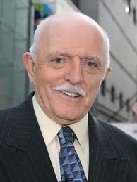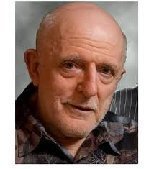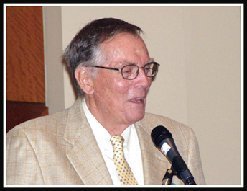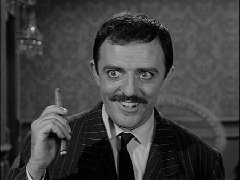South Dakota (/dəˈkoʊtə/ ⓘ də-KOH-tə; Sioux: Dakȟóta itókaga, pronounced [daˈkˣota iˈtokaga]) is a landlocked state in the North Central region of the United States. It is also part of the Great Plains. South Dakota is named after the Dakota Sioux tribe, which comprises a large portion of the population with nine reservations currently in the state and has historically dominated the territory. South Dakota is the 17th largest by area, but the 5th least populous, and the 5th least densely populated of the 50 United States. Pierre is the state capital, and Sioux Falls, with a population of about 213,900, is South Dakota's most populous city. The state is bisected by the Missouri River, dividing South Dakota into two geographically and socially distinct halves, known to residents as "East River" and "West River". South Dakota is bordered by the states of North Dakota (to the north), Minnesota (to the east), Iowa (to the southeast), Nebraska (to the south), Wyoming (to the west), and Montana (to the northwest).
Humans have inhabited the area for several millennia, with the Sioux becoming dominant by the early 19th century. In the late 19th century, European-American settlement intensified after a gold rush in the Black Hills and the construction of railroads from the east. Encroaching miners and settlers triggered a number of Indian wars, ending with the Wounded Knee Massacre in 1890. As the southern part of the former Dakota Territory, South Dakota became a state on November 2, 1889, simultaneously with North Dakota. They are the 39th and 40th states admitted to the union; President Benjamin Harrison shuffled the statehood papers before signing them so that no one could tell which became a state first.
Key events in the 20th century included the Dust Bowl and Great Depression, increased federal spending during the 1940s and 1950s for agriculture and defense, and an industrialization of agriculture that has reduced family farming. Eastern South Dakota is home to most of the state's population, and the area's fertile soil is used to grow a variety of crops. West of the Missouri River, ranching is the predominant agricultural activity, and the economy is more dependent on tourism and defense spending. Most of the Native American reservations are in West River. The Black Hills, a group of low pine-covered mountains sacred to the Sioux, is in the southwest part of the state. Mount Rushmore, a major tourist destination, is there. South Dakota has a temperate continental climate, with four distinct seasons and precipitation ranging from moderate in the east to semi-arid in the west. The state's ecology features species typical of a North American grassland biome.
While several Democrats have represented South Dakota for multiple terms in both chambers of Congress, the state government is largely controlled by the Republican Party, whose nominees have carried South Dakota in each of the last 14 presidential elections. Historically dominated by an agricultural economy and a rural lifestyle, South Dakota has recently sought to diversify its economy in other areas to both attract and retain residents. South Dakota's history and rural character still strongly influence the state's culture.
American Settlement & Statehood
In 1803, the United States purchased the Louisiana Territory, an area that included most of South Dakota, from Napoleon Bonaparte, and President Thomas Jefferson organized the Lewis and Clark Expedition to explore the region. In 1817, an American fur trading post was set up at present-day Fort Pierre, beginning continuous American settlement of the area. In 1855, the U.S. Army bought Fort Pierre but abandoned it in 1857 in favor of Fort Randall to the south. Settlement by Americans and Europeans was by this time increasing rapidly, and in 1858 the Yankton Sioux signed the 1858 Treaty, ceding most of present-day eastern South Dakota to the United States.
In 1874, gold was discovered in the Black Hills during a military expedition led by George A. Custer and miners and explorers began illegally entering land promised to the Lakota. Custer's expedition took place despite the fact that the Sioux had been granted the entire western half of present-day South Dakota (West River) in 1868 by the Treaty of Laramie as part of the Great Sioux Reservation. The Sioux declined to grant mining rights or land in the Black Hills, and war broke out after the U.S. failed to stop white miners and settlers from entering the region. Eventually the U.S. won and broke up the Great Sioux Reservation into five reservations, settling the Lakota there. In 1980 the Supreme Court and Congress ordered compensation but the Lakota still refuse to accept it, insisting on return of their land.
South Dakota has several sites administered by the National Park Service. Two national parks have been established in the state, both in its southwestern region. Wind Cave National Park, established in 1903 in the Black Hills, has an extensive cave network and is home to a large herd of bison. Badlands National Park was established in 1978, and features an eroded, brightly colored landscape surrounded by semi-arid grasslands. Mount Rushmore National Memorial in the Black Hills was established in 1925. The sculpture of four U.S. Presidents was carved into the mountainside by sculptor Gutzon Borglum.
If you want to read a whole lot more, go here: https://en.wikipedia.org/wiki/South_Dakota
- SERVES
- 6
- COOK TIME
- 35 Min
Our Taco Casserole is a simple, Mexican-inspired, ground beef recipe that everyone in your family will eat right up. It's got all the tasty taco fillings you and your family love. But best of all, you can make our Taco Casserole in advance, and heat it up when you're ready to eat!
This easy casserole recipes has a special place in the hearts of the Test Kitchen. Why? Because this Taco Casserole is a meal we’ve all sat down to and enjoyed together. When you’re looking to make a meal that will really bring family together, this dinner casserole should be your go-to. The juicy ground beef is perfectly complimented by the gooey cheese and zesty taco seasoning! And we think the crushed tortilla chips add the perfect crunch. Don’t wait to make this easy casserole recipe; it’s a Tex-Mex favorite the whole family will love!
- 1 pound ground beef (see Note)
- 1 small onion, chopped
- 1/2 teaspoon garlic powder
- 1 (1.25-ounce) envelope taco seasoning mix
- 1 (8-ounce) can tomato sauce
- 1 cup sour cream
- 1 cup small curd cottage cheese
- 4 cups crushed tortilla chips
- 2 cups (8 ounces) shredded Colby Jack cheese
- Preheat oven to 350º. Coat a 2-1/2-quart casserole dish with cooking spray.
- In a large skillet over high heat, cook beef and onion 5 to 6 minutes, or until no pink remains; drain off excess fat. Add garlic powder, taco seasoning mix, and tomato sauce to beef; mix and set aside.
- In a medium bowl, combine sour cream and cottage cheese; set aside.
- Place half the crushed chips in the bottom of the casserole dish. Add enough meat mixture to cover the chips, then cover the meat with half the sour cream mixture. Sprinkle with half the cheese; repeat layers.
- Bake, uncovered, 30 to 35 minutes, or until casserole is heated through.









.jpg)










No comments:
Post a Comment